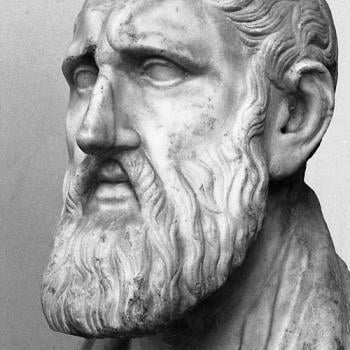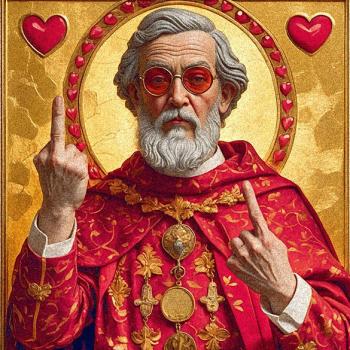The preface to The Love Story of a Mormon was written by Graham's friend Bishop J. E. C. Welldon, dean of Manchester. Welldon wrote passionately that the reader should not interpret the book as a work of pure fiction:
It is a novel with a purpose; but as being such it is all the more valuable, for it copes with a definite evil. Like Miss Graham I have been for some time past concerned with the Mormon propaganda in England. I have learnt something of its secrecy, its assiduity, and its success; I know how important it is to warn young emotional religious girls, living perhaps in more or less unhappy homes, against its seductiveness. But a novel is often a better mentor than a sermon or a speech, if only because it appeals to a larger circle of people.
The Mormonism which Miss Graham opposes is the Mormonism of the Salt Lake City. There polygamy has long flourished, and there it still exists. It is in fact the distinctive feature of Mormonism in Utah; for apart from polygamy that Mormonism is dull and unintelligible. Girls who emigrate from England to Utah find themselves members of an immorally constituted society.
There is no great need, I think, to invoke the arm of the law in England against Mormonism. If the light is once let in upon it, it will die of itself. The moral sense of English men and women will rise against it. It is my earnest hope that Miss Graham's literary skill may prove efficacious in the crusade in which she has played so notable and so noble a part.
In November 1919, Graham was invited to speak at the World Christian Citizenship Conference in Pittsburgh. Her keynote address at the World Conference on Mormonism session was so powerful that Elder James E. Talmage was booed from the rostrum when he attempted to reply to Graham's impassioned speech. That same year, Great Britain denied the visas of all Latter-day Saint missionaries bound for England until Senator Reed Smoot was successful in persuading authorities to reissue them nearly one year later. Graham's strident anti-Mormonism in 1917 sought a parallel to England's struggle against Germany when she described Utah as "really a kind of Kaiser rule, and the Hohenzollern bully might well stand as a replica of the Mormon Church power, working its evil for personal gain, and using God's name as a weapon and boast."
Trapped by the Mormons
Church officials became highly sensitized to the power of popular film as a result of the 1911-12 release of A Victim of the Mormons, from the renowned Nordisk company, and the play Through Death Valley, or The Mormon Peril, both dealing with well-worn plots involving polygamy and sinister Mormons. The Master Film Company's release of Trapped by the Mormons in 1922 coincided with the next major anti-Mormon crusade in England. Even as late as 1928, when it was reissued under the title The Mormon Peril, the film was publicized by lurid copy, warning "Girls Beware!" On its reissue, contemporary sources report that "its scenes are accompanied during projection by the running commentary of a lecturer."
Trapped by the Mormons closely follows the narrative of Graham's novel, but what I wish to emphasize are the similarities between the visual images portrayed in the film and the verbal descriptions painted by Graham in her novel. The film begins by showing a wide-eyed Mormon missionary, here named Isoldi Keene, not Ziba Wayne as in Graham's novel. The camera's iris narrows to Keene's main attraction, his transfixing eyes. Lest the viewer miss so obvious a visual clue, the intertitles inform us that this man is indeed one whose "mesmeric powers" allow him to be "one of the cleverest recruiters in the Mormon ranks." Later in the film, Keene encounters a gypsy caravan and in full view of the girlfriends whom Nora Prescott (in the book named Jacinth Abbott) has gathered together, he performs the miracle of raising a woman from the dead. Suitably impressed, the girls depart with Keene's admonition not to tell anyone of the so-called miracle. Keene's charlatanesque performance is capped by the payoff of the woman whom he "raised from the dead" and her male accomplice. Keene congratulates the participants by saying that their "acting was superb!" The woman then states that she did not think that Keene would ever release her from his trance. While the act was contrived for Keene's own purposes, the film makes clear that Keene's mesmeric powers are real. The remainder of the seventy minutes of screen time follows the book faithfully, with the exception of Wayne's suicide. In the film, Keene is simply hauled off to jail, leaving the reunited young lovers to embrace as the film fades out to the end.
Critically, Trapped by the Mormons was viewed according to the "standard set by present-day films" as "lamentably lacking in most of the essentials." Even on its re-release in 1928, it was considered by a leading trade paper as "nothing more nor less than a propaganda picture, crudely produced." The reaction of the LDS Church to the 2005 remake was one of little concern. "With something like this, it is over the top and we don't take it seriously," Church spokeswoman Kim Farah said. "Nobody can possibly take this seriously." In 1922, however, it was a different story to then missionary and later Church President Ezra Taft Benson. His journal records his eviction from his lodgings in England due to the hostile atmosphere created by Graham's books and the film. When Married to a Mormon -- the sequel to Trapped by the Mormons -- was released later the same year, the pluckiness of Mormon missionaries was evident in their proactive response. President of the Hull Conference G. Osmond Hyde seemed to see a bright spot amid what he called a "bad-rank" film:




